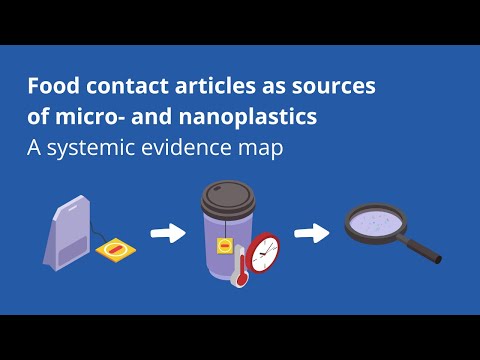Simply using your food packaging in the manner it's supposed to be used is enough to contaminate your comestibles with a sprinkling of microplastics.
A painstaking review of 103 scientific studies on microplastic food contamination found actions as simple as opening a plastic drink bottle or using a plastic chopping board can shave off tiny particles of common polymers.
Even glass bottles that use a plastic gasket, plastic-lined pizza boxes, plastic-lined disposable coffee cups, plastic tea bags, plastic wrappings, and microwaveable plastic containers shed microplastic like a Persian cat sheds fur in spring.
The problem, a team led by biologist Lisa Zimmermann of the non-profit Food Packaging Forum in Switzerland says, is ubiquitous.
Related: Microplastics Could Accumulate in Our Brains More Than in Kidneys And Livers
"This is the first systematic evidence of how normal and intended use of foodstuffs packaged in plastics can be contaminated with micro- and nanoplastics," Zimmermann told CNN.
"We found food packaging is actually a direct source of the micro- and nanoplastics measured in food."

The more scientists look into micro- and nanoplastics, or MNPs, the more we see just how widespread they have become. These are tiny pieces of material, too small to see, released by a variety of polymers as they're used or break up in the environment.
Plastic is ubiquitous in our modern society, providing a cheap, easily manufactured solution to everything from storage to clothing to furnishings. In recent decades it has become clear its resistance to degrading doesn't mean it is impervious to crumbling into smaller fragments, which easily filter through ecosystems.
Studies have found microplastics throughout the human body, including placentas. It's been found in every major organ in mice, including their fetuses.
What makes this even more worrying is that we just have very little idea about the health impacts, although it's not looking promising: A study last year found that cardiac and stroke patients with a high concentration of microplastics in their carotid artery plaque had a significantly elevated risk of death.
Zimmermann and her colleagues examined 103 studies that have investigated the presence of plastic particles in food and food simulants. From these studies, they extracted 600 entries about food contact articles, of which 96 percent reported the presence of MNPs.
Those entries were also compiled into a searchable and filterable dashboard that anyone can access, allowing users to home in on different types of food contact articles, from packaging to baby bottles, as well as different types of plastic.
Related: Glass Bottles Actually Contain More Microplastics, Scientists Find
Of particular note, the researchers found, is that multiple studies found that for some reusable plastic items, such as melamine bowls, the amount of microplastics shed increased with each wash. This suggests that repeated heating and abrasion increases the rate at which these items degrade.
The researchers also note that ultra-processed food contains more microplastic than minimally processed food. The reason for this is simple: more processing steps mean greater exposure to plastic food-processing equipment, resulting in more MNPs in the final product.
Their findings, the researchers say, strongly indicate that not only is a lot more research warranted, but also that more needs to be done to minimize the use of plastics in food packaging and preparation.
"Our study shows that under intended or foreseeable conditions of use, plastic food contact articles can release MNPs into foodstuffs," they write in their paper.
"The contribution of plastic food contact articles to human MNP exposure is currently unclear and warrants further investigation. Further research is also necessary to establish human health impacts associated with MNP exposures, but a precautionary approach aimed at limiting human exposure to MNPs, including from food contact articles, is prudent."
You can access the interactive dashboard here, and the paper has been published in npj Science of Food.